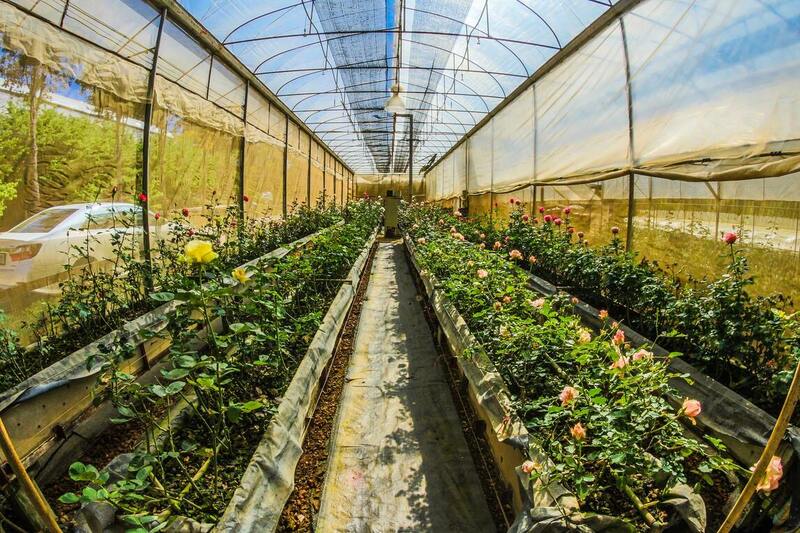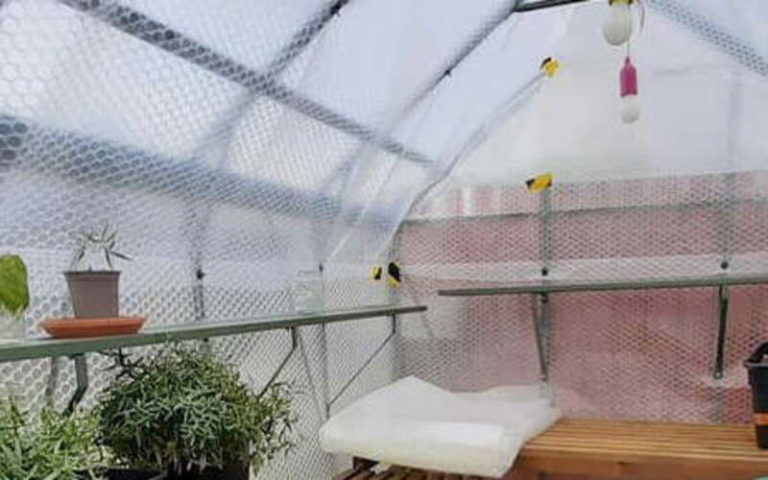Rain Protection in Agriculture: Overcoming the Challenges for Better Crop Yield
Rain is essential for crop growth and agricultural productivity, but too much of it can be harmful. Heavy rain can lead to soil erosion, waterlogging, and soil compaction, which can damage crops and reduce yield. To prevent these issues, farmers use various rain protection methods in agriculture. In this article, we’ll discuss the different types of rain protection methods, their benefits, and the challenges associated with them.
Types of Rain Protection Methods in Agriculture
Mulching
Mulching involves covering the soil around crops with organic materials like straw, leaves, or bark. This method can help conserve soil moisture and regulate soil temperature. Mulch can also reduce soil erosion by preventing rainwater from washing away the topsoil. Additionally, mulch can suppress weed growth, which can compete with crops for nutrients and water.
Greenhouses
Greenhouses are enclosed structures that provide a controlled environment for crops. They are usually made of glass or plastic and can range in size from small backyard structures to large commercial facilities. Greenhouses can protect crops from rain, wind, and extreme temperatures. They also provide a stable environment for plants to grow in, which can lead to higher yields and better-quality produce.
Rain Shelters
Rain shelters are temporary structures that are used to protect crops from heavy rain. They are typically made of plastic or other waterproof materials and can be set up quickly and easily. Rain shelters are often used for crops that are sensitive to water, such as fruits and vegetables. They can also be used to protect crops during the seedling stage, which is when they are most vulnerable to rain damage.
Irrigation Systems
Irrigation systems are used to provide crops with water when there is not enough rain. They can also be used to regulate the amount of water that crops receive, which can prevent waterlogging and soil compaction. There are several types of irrigation systems, including sprinkler irrigation, drip irrigation, and flood irrigation. Each type has its own advantages and disadvantages, depending on the crop and the environment.
Benefits of Rain Protection in Agriculture
Preventing Soil Erosion
Soil erosion is a major problem in agriculture, especially in areas with heavy rainfall. When rainwater washes away the topsoil, it can cause nutrient depletion and reduce soil fertility. This can lead to lower crop yields and lower profits for farmers. By using rain protection methods like mulching and rain shelters, farmers can prevent soil erosion and protect their crops.
Reducing Waterlogging and Soil Compaction
Too much rain can also cause waterlogging and soil compaction, which can damage crop roots and reduce nutrient uptake. This can lead to stunted growth and lower crop yields. Irrigation systems can help regulate the amount of water that crops receive, which can prevent waterlogging and soil compaction.
Improving Crop Yield and Quality
Rain protection methods can lead to higher crop yields and better quality produce. By providing a stable environment for crops to grow in, methods like greenhouses and rain shelters can protect crops from rain damage and extreme temperatures. This can lead to higher yields and better-quality produce. Mulching can also improve soil fertility and nutrient uptake, which can lead to healthier and more productive crops.
Challenges of Rain Protection in Agriculture
Cost and Maintenance of Rain Protection Systems
Rain protection systems like greenhouses and irrigation systems can be expensive to install and maintain. This can be a major barrier for small-scale farmers, who may not have the resources to invest in these systems. Additionally, rain protection systems require regular maintenance to ensure that they are working properly.
Availability of Resources
Some places may not have enough water or materials to make rain protection systems. This can make it difficult for farmers to implement rain protection methods. In some cases, farmers may need to rely on the government or non-governmental organizations to provide resources and support for rain protection.
Environmental Impact
Some rain protection methods, such as greenhouses and irrigation systems, can have a negative environmental impact. Greenhouses can require large amounts of energy for heating and cooling, and irrigation systems can lead to water waste and soil salinization. Farmers need to think about how their rain protection methods affect the environment and choose methods that are long-lasting and good for the environment.
Conclusion
Rain protection is an important aspect of agriculture that can help farmers improve crop yields and quality while preventing damage from heavy rain. There are several methods of rain protection, including mulching, greenhouses, rain shelters, and irrigation systems. Each method has its own benefits and challenges, and farmers need to choose the method that works best for their crop and environment. While there are challenges associated with rain protection methods, the benefits of protecting crops from rain outweigh the costs. By implementing rain protection methods, farmers can improve their productivity and profitability while also protecting the environment.
FAQ:
Q: What is rain protection in agriculture?
Ans: In agriculture, “rain protection” refers to the strategies employed by farmers to shield their crops from the harm that heavy rainfall can cause. These methods can include using rain shelters, mulching, greenhouses, and irrigation systems.
Q: Why is rain protection important in agriculture?
Ans: Rain protection is important in agriculture because heavy rainfall can damage crops and reduce yield. Using methods to protect against rain can stop soil erosion, waterlogging, and soil compaction, all of which are bad for crops. Additionally, rain protection methods can improve crop yield and quality by providing a stable environment for plants to grow in.
Q; What are the benefits of rain protection in agriculture?
In agriculture, rain protection helps keep the soil from washing away, cuts down on waterlogging and soil compaction, and increases crop yield and quality. Methods for keeping rain away can also stop weeds from growing, keep soil moist, and protect crops when they are at their most vulnerable.
Q: What are the challenges of rain protection in agriculture?
The challenges of rain protection in agriculture can include the cost and maintenance of rain protection systems, the limited availability of resources, and the potential environmental impact of rain protection methods. Additionally, some rain protection methods may not be suitable for all crops or environments.
Q: What are some examples of rain protection methods?
Examples of rain protection methods include mulching, greenhouses, rain shelters, and irrigation systems.
Also Read:
Agriculture Protection Solutions: Mitigating Risks and Securing the Future of Farming







